Are you looking to upgrade your ping pong paddle, but you’re unsure what to do? Or perhaps you’re about to buy your first paddle and don’t know where to begin? Well, you’ve come to the right place.
This guide covers the best ping pong paddles available in the market today to help you find the right racket for your skill level. After all, choosing a paddle is serious business. Choose the wrong one, and you could stunt your development. Trust me, I know! I stuck around with poor-quality rackets for far too long, which strongly restricted my attacking ability and knowledge of spin. So don’t make the same mistake. Invest in the best ping pong paddle for you as it will help you to improve.
As a brief overview, here are the best ping pong paddles in our opinion:
- Killerspin JET 800 — best for intermediate players
- JOOLA Infinity Balance — best value for money
- Killerspin Jet 200 — best for first-time players
- Butterfly 401 — best beginner ping pong paddle
- Butterfly Timo Boll ALC Proline w/Tenergy 05 — best for advanced players
But these are just 5 of our favorite 11 paddles. Consider reading our entire guide so that you don’t miss out on any valuable info!
Table of Contents
ToggleQuick Answer: The Best Ping Pong Paddles
Why Should You Trust Table Tennis Spot?
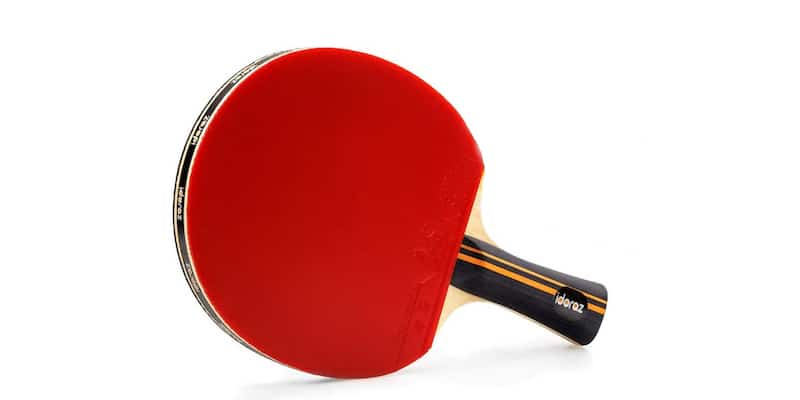
Our team has decades of experience playing the sport and testing equipment, so we can provide more insightful information to help you further your table tennis skill.
For this review, we studied all pre-made ping pong paddles and put them head to head. We considered factors such as spin, speed, control, and value, and tried our best to provide recommendations to various types of players.
Read More: How to Choose and Buy a Good Ping Pong Ball
Ping Pong Paddle Reviews
The following paddles are some of the best on the market. We’ve provided discussion and some pros and cons to go with each. Let’s get started.
1. Killerspin JET 800 Ping Pong Paddle — Best for Intermediate Players
Specifications
- 7-Ply carbon blade
- Nitrx-4Z rubbers
- Speed: 9.5
- Spin: 9.0
- Control: 8.0
- ITTF approved: Yes
In at number one, we have a high-quality paddle in the form of the Killerspin Jet 800 from the Killerspin Jet series. It’s one of a collection of preassembled rackets ranging from the JET 100 all the way up to the JET 800. The JET 800 is the latest model from the series and is engineered for competitive play. This paddle has a 7-ply composition containing 5 plies of wood and 2 of carbon fiber. The 7-ply construction is what gives the Jet 800 such a remarkable pace. However, it isn’t blisteringly quick like professional ping pong paddles are. We feel it is the best table tennis racket for intermediate ping pong players. If it was any quicker, we would instead have had to classify it as an advanced ping pong paddle.
A cool extra with this paddle that you won’t get from any brand other than Killerspin is the memory bookcase. Made out of laminated cardboard with a magnetic enclosure, it serves both as a case for your paddle and as a means to write scores and other table tennis messages. Pretty neat! However, if we’re honest, we doubt you’ll use it. We recommend a more durable racket case. You can find one by checking out our favorite cases.
Pros:
- Offers great speed and spin
- Durable and constructed with great quality material
- Includes storage box
Cons:
- Might be heavy if you are not used to quality paddles
- Not suitable for beginners
- No edge tape to protect the
rubber and the blade
2. STIGA Pro Carbon Ping Pong Paddle
Specifications
- 7-Ply carbon blade
- S5 rubbers 2 mm
- Speed: 9.9
- Spin: 10.0
- Control: 8.0
- ITTF approved: Yes
The STIGA Pro Carbon is a heavy bat with superior quality for high-level play. It is an excellent choice for aggressive players who smash and use a lot of spin. However, it is not so good if you want control. This may not be the right racket for you if you’re a defensive player. Such players will instead want a slower blade with a thinner sponge.
One thing that sets this paddle apart from many of the others on this list is the carbon technology in the blade. Like the Killerspin Jet 800, it is 7-ply, meaning it is a faster and heavier paddle than most, so you may need some time to get used to it. Unlike the Jet 800, however, it uses Stiga’s WRB technology. This balanced weight distribution tech moves the center of gravity to the point of contact on the blade. In my opinion, this actually makes it unbalanced, as the paddle is head-heavy. That being said, some players like it, and it does have the advantage of better feeling as the vibrations in the handle are more pronounced.
We have a more detailed review of the STIGA Pro Carbon available, so check that out for more information if you’re interested.
Pros:
- Good feeling
- Offers high spin and great power
- Sleek design
Cons:
- Might be heavy if you are not used to quality paddles
- Not suitable for beginners
#3. STIGA Raptor Table Tennis Racket
Specifications
- 7-Ply carbon blade
- S5 rubbers 2 mm
- Speed: 9.9
- Spin: 10.0
- Control: 8.0
- ITTF approved: Yes
In at number three, we have the relatively new STIGA Raptor. It’s very similar to the Pro Carbon, weighing in at 1.2 lbs and having the same 7-layered blade, 5 of which are made with balsa wood and 2 layers of lightweight carbon. This means you get more power and speed than a thick 7-ply blade without the heavy feel.
Regarding the rubbers, the STIGA Raptor has the same STIGA S5s as the Pro Carbon. These provide better control over the ball than many other rubbers, thanks to the ACS technology. They work particularly well with the 2 mm sponge — it really helps the ball bounce off the paddle, giving more speed and a hefty amount of spin. On the other hand, it’s probably not the best table tennis paddle for recreational players as it’s too lively. But if you’re leveling up your game and want a reasonably priced racket, then we’d definitely recommend checking out the STIGA Raptor. It’s also 10 bucks cheaper than the Pro Carbon, which is a big plus.
Pros:
- Good for aggressive players
- High spin and speed
- Sleek design
Cons:
- Might be heavy if you are not used to quality paddles
- Not suitable for beginners
#4. JOOLA Infinity Balance — Best Value for Money
Specifications
- 7-Ply all-wood blade
- JOOLA Micron 2.1 mm rubbers
- Speed: 9.2
- Spin: 9.2
- Control: 9.2
- ITTF approved: Yes
Up next, we have the JOOLA Infinity Balance, which features a 7-ply all-wood blade. This is a happy medium between the 5-ply wooden blades and the 7-ply carbon blades. The additional 2 wooden layers increase the pace and weight over traditional 5-ply wooden blades, and the paddle preserves its feeling by opting for wood over carbon. This means the Infinity Balance has exceptional feeling and good pace to go with it — perfect for intermediate players who play an all-round game.
But wait, there’s more to like. Not only is it a great performer, but it is also remarkably priced. This makes the Infinity Balance the best table tennis racket for the money. So if value is what you are after, you need look no further.
Pros:
- Great value for money
- Super feeling
- Fast smashes
- Forgiving
Cons:
- Will challenge beginners since it’s quick
#5. STIGA Evolution Ping Pong Paddle
Specifications
- 6-Ply all-wood blade
- STIGA 2 mm
rubber - Speed: 9.6
- Spin: 9.4
- Control: 9.0
- ITTF approved: Yes
The STIGA Evolution is another top ping pong paddle for the price, and it is an excellent choice for any beginner who’s ready to take their game to the next level, thanks to its fantastic control-to-speed ratio. Control is critical if you want to be more precise with your shots, and the Evolution can help improve play in this aspect.
It also delivers plenty of power due to STIGA’s various manufacturing technologies. With a bigger sweet spot than other rackets, the Evolution can help improve the quality of your shots. Unlike the Pro Carbon and the Jet 800, this racket doesn’t include any layers of carbon. Therefore, it is lighter. This suits players who enjoy playing close to the table, where resetting quickly is more important.
The Evolution is made up of a 6-ply blade that packs a punch (but isn’t too overwhelming), and pairs with great ITTF-approved STIGA rubbers that feature a 2 mm sponge. We feel it gears slightly toward the offensive playing style. However, all-round players or even defensive players can still make great use of it.
As a final selling point, the STIGA Evolution is highly affordable, making it a worthy investment if you’re ready to take the next step in your table tennis game. We feel it would be a solid gift for newer ping pong players, and it is well-deserving of a place on our list of the best table tennis bats.
Pros:
- Offers very good control, spin, and speed
- Good feeling
- Excellent for beginners
- Highly affordable
Cons:
- Too slow for some offensive players
#6. DHS Hurricane II Ping Pong Paddle
Specifications
- Hurricane 2 Blue Sponge & G555 rubbers
- Hurricane 2 blade
- Speed: 8.7
- Spin: 9.4
- Control: 8.0
- ITTF approved: Yes
The DHS Hurricane II is a solid choice for intermediate players looking for a racket that delivers incredible spin. In fact, it’s second on this list regarding the ping pong paddles with the best spin, losing out to the Butterfly Timo Boll ALC Proline w/Tenergy 05. By my estimation, it’s not quite a professional ping-pong paddle, but it’s not far off.
What differentiates Hurricane II from other models is that it features different rubbers on the forehand and backhand sides. The red side uses the highly popular DHS Hurricane 2
We recommend this paddle for players who like to play linearly, i.e. you get a predictable ball speed relative to the power of your stroke. On the other hand, we don’t recommend this for players who want maximum pace. It has no built-in catapult effect and really suffers when you start attacking far away from the table.
It’s also great for players who want to start looping and wreaking havoc with spinny serves. As previously mentioned, Hurricane 2 is loaded with spin, so you have a high ceiling with this paddle. Just be aware that with being able to produce high spin, you are also more vulnerable to it. As such, it may take some time to adjust to the increased levels of spin.
This ping pong paddle set includes the racket itself, a carrying case to keep it safe, and two ping pong balls. While you can certainly find cheaper bats available, it is remarkably well-crafted and a good ping pong paddle for the money.
Pros:
- Offers a high degree of spin
- Good control
- Different
rubber types on each side - Good for intermediate players
- Includes case and balls
Cons:
- Suffers away from the table
- Comparatively expensive
#7. Palio Expert 2 Ping Pong Paddle
Specifications
- Palio ETT Expert 2.0 all-wood blade
- Palio CJ8000 rubbers
- Speed: 6.0
- Spin: 9.0
- Control: 10
- ITTF approved: Yes
Expert Table Tennis and Palio, a Chinese brand, recently produced rackets for players of all levels, and there’s plenty to love about their Palio Expert 2. If you’re moving out of the beginner level and want to improve quickly, you might want to try this racket.
The Palio Expert 2 can help you reach the next level with its CJ8000 rubbers, which have a soft sponge and a tacky top sheet that allow you to generate plenty of spin — all while maintaining control. Plus, while the paddle is not particularly fast, it still has more than enough speed to put the ball away when needed. So you shouldn’t let the low-speed rating concern you.
One aspect I like is that the rubbers are replaceable. Most cheaper paddles use super glue rather than table tennis glue, which means once the rubbers wear out you have to bin the entire racket. It’s definitely nice to know you can keep the blade. However, I feel by the time the rubbers wear out. You’ll likely have improved enough to want to upgrade your entire setup anyway.
Included with the paddle is a carrying case to protect your investment. Overall, this tournament-approved paddle provides the balance between speed and control required to reach intermediate levels of play. If you’re serious about improving, it may be perfect for you.
Pros:
- Offers great spin and decent control
- Good for those stepping out of beginner-level play
- Comes with a carrying case
Cons:
- Plain appearance
#8. Idoraz Table Tennis Paddle
Specifications
- 5-Ply all-wood blade
- 2 mm rubbers
- Speed: 9.9
- Spin: 9.3
- Control: 9
- ITTF approved: Yes
The Idoraz table tennis paddle is a good choice for beginners and can help you develop your performance. The 2 mm rubbers offer some nice spin, and it also has good pace to go with it — its speed is its most alluring stat.
Usually, we wouldn’t recommend an unknown name like Idoraz. However, it is one of the most popularly reviewed paddles on Amazon, and it also is pretty cheap. The Idoraz racket may be relatively unknown, but it is still one of the best ping pong paddles for intermediate players. It even comes with a 100% satisfaction guarantee for 3 months, inspiring confidence.
Pros:
- Well-priced
- Good feeling
- Suits offensive players
- Comes with a case
Cons:
- Unknown table tennis brand
#9. Killerspin Jet 200 Ping Pong Paddle — Best for First-Time Players
Specifications
- 5-Ply all-wood blade
- Jet 200 rubbers
- Speed: 7
- Spin: 6
- Control: 8.5
- ITTF approved: No
Killerspin has plenty of excellent paddles to choose from, and despite being a relatively new brand, they are impressing players. The Killerspin JET 200 is a decent ping pong paddle that will support novice ping pong players as they work on their game. This racket is a sound choice if you need to develop ball control and perfect basic strokes.
Like many other beginner paddles, the JET 200 features a 5-ply blade made solely from wood for good feeling and excellent control. It has a flared handle, which is the most popular grip type, and features rubbers in 3 fun colors, which you can choose from. They are lacking in speed and spin, but this shouldn’t be much of an issue if you are an absolute beginner. In fact, it’s a good idea to start with a fairly tame racket to facilitate learning.
We consider this to be the best table tennis paddle for players just starting the sport who have very poor ability. The lack of pace makes it highly forgiving — perfect for players struggling to consistently keep the ball on the table. It could be a good option for defensive players who are a little more skilled but still not quite at the intermediate level.
One thing to note is that the JET 200 does not have ITTF-approved rubbers, so if tournament play is in your future, you might want to look elsewhere. We don’t see this as much of a negative though, as absolute beginners should not be competing officially for some time, if ever. By that time, they will need to upgrade their paddle anyway.
Included with the Jet 200 is a ping pong case to keep your racket safe.
Pros:
- Good paddle for absolute beginners
- Reasonably priced
- Choose from 3 fun colors
- Includes storage box
Cons:
- Too slow for most players
- Not ITTF approved
Read More: The Best Table Tennis Rubbers
#10. Butterfly 401 Ping Pong Paddle — Best for Beginners
Specifications
- TBC 401 5-ply all-wood blade
- Yuki 2.1 mm rubbers
- Speed: 8
- Spin: 8
- Control: 8.5
- ITTF approved: Yes
The Butterfly 401 is a beginner paddle that lots of players would describe as a solid all-around option. And at a price that won’t break the bank, players can develop their game without making a significant investment. While it doesn’t offer incredible stats in any one area, it provides a solid spread.
One of the most notable features is the long-lasting design of the
Despite a few drawbacks, the Butterfly 401 is a popular model for beginners. If you want a lot of bang for your back, it’s certainly worth checking out. To us, it’s the best ping pong paddle for beginners. This model even comes with a carrying case to protect your purchase.
Pros:
- Perfect for the all-round playing style
- Good spin
- Value for money
- Includes case
Cons:
- Small handle, not good for those with large hands
- Little weak when it comes to power
#11. Butterfly Timo Boll ALC Proline w/Tenergy 05 — Best for Advanced Players
Specifications
- Timo Boll ALC carbon blade
- Tenergy 05 2.1 mm rubbers
- Speed: 13
- Spin: 11
- Control: 8.5
- ITTF approved: Yes
As our recommendation for elite players, we have the Timo Boll Proline paddle. It features the Timo Boll ALC blade and Tenergy 05. These are some of the most popular equipment premium manufacturers Butterfly has ever produced. And this isn’t just according to regular consumers, it includes the pros. In fact, to many, Tenergy 05 is the best
Tenergy 05 is a very spinny
The second drawback is that it’s hard to control. However, if you’re at an advanced level, you should become accustomed to it after a short while.
So overall, it’s an incredible racket. It’s both the best ping pong paddle for spin and the best for advanced players.
To learn more about this paddle, check out our reviews on the Timo Boll ALC blade and Tenergy 05.
Pros:
- Very fast
- Very high spin
- Features highly popular rubbers and blade
Cons:
- Tough to control
- Expensive
Read More: Why Table Tennis Rackets Are Red and Black in Color
How to Choose a Ping Pong Paddle: Buyer’s Guide
The Anatomy of a Ping Pong Paddle
Table tennis rackets have 4 parts: the handle, blade, top sheet, and sponge. The combination of these parts determines the quality of a bat.
Table tennis paddles are often benchmarked by speed, spin, control, handle type, and softness or hardness. However some of these indicators have no industry-unified values, therefore it is tough for consumers to cross-compare rackets from competing brands.
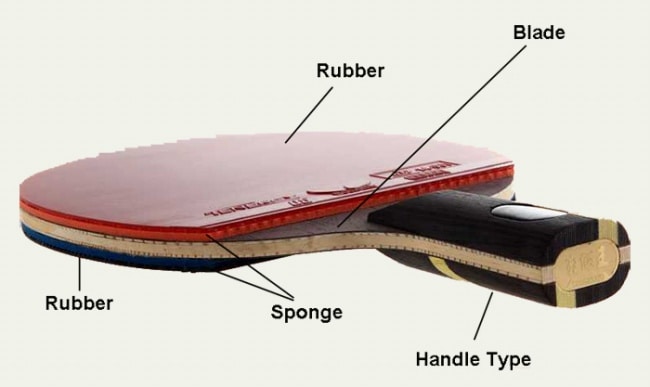
Ping Pong Paddle Grips and Handles
There are two main grips for ping pong rackets: the shakehand grip and the penhold grip. Each handle type emulates the motion it is named after. Penhold handles, for instance, are shaped in a comfortable way, as if you were holding a pen, as this is how you hold the paddle.
The biggest difference between the two grips in terms of functionality is that the penhold grip offers much more freedom of movement, while the shakehand is better for backhand. Ultimately, it’s up to you to pick what’s more comfortable — there is technically no best ping pong paddle handle type. Penhold grips are more popular in the Asian scene, whereas shakehand dominates everywhere else.
Shakehand
For shakehand, there are 3 types of handles: FL, ST, and AN.
- ST: Straight grip. The handle enables a player to change grip as they play.
- AN: Anatomic grip. The handle is built with a wave shape and fits the palm well while also providing stability.
- FL: Flared handles or concave handles have a thinner handle in the center and a wider handle at the base. It is the most popular handle type.
Penhold
For penhold, there are 2 types of handles categorized into Chinese style (CS) and Japanese style (JP).
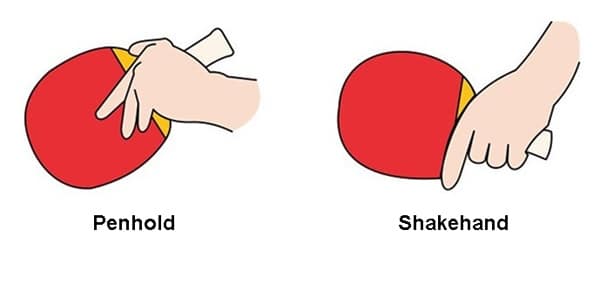
Table Tennis Blade Qualities You Need to Know
Besides the obvious categories of spin, speed, and control, table tennis blades are often classified by stiffness, weight, and composition. You should not overlook these important characteristics if the information is available. Especially among advanced equipment.
Below is a table that offers a summarized take on how each impacts performance.
| Stiffness | Weight | Composition |
| Stiff blades are the best at retaining their shape when they contact the ball. This causes the ball to be quickly repelled from its surface. As such they are the best for smashing. |
Heavy blades can take a while to get used to, especially in the hands of a beginner. With sizeable weight behind them, they are often fast, and it can take you longer to reset to the ready position. |
All-wood blades contain no layers of carbon. The result is a flexible blade with a lot of feeling. This is the perfect blade composition for beginners. |
| Flexible blades bend slightly on impact. While this means they are slower at repelling the ball, they can hold it for longer. The result is that they are better at producing spin. |
Beginners like light blades because they feel more natural. Even many advanced ping pong players try to find light setups to get in position quicker. Light blades, generally speaking, are slower than heavy blades. However, the right composition can break this trend. |
Carbon fiber blades are fast, they usually include 5 layers of wood and 2 layers of carbon for a speed boost. The increased pace and reduced feeling mean that only high-level intermediate players and up should really use them. |
Tips to Help You Find a Quality Paddle
While it’s easy to identify top-rated ping pong paddles in person, you are mostly restricted to determining the quality of rackets online, given that’s where you will buy them. Fortunately, there are still ways to ensure that you don’t fall for a poor-quality paddle.
Made by One of the Best Ping Pong Paddle Brands
A good rule of thumb is to stick with the top table tennis brands. These guys are well-respected and rarely put out weak equipment. In fact, at the beginner level, it’s tough to go wrong. Their paddles should comfortably exceed the quality of competing unknown brands. After all, they are table tennis specialists!
ITTF-Approved
The next step is to look for an ITTF logo at the bottom of the
Well-Weighted
A surefire way to tell a racket is poor quality is if it feels far too light. Such rackets use poor-quality wood and very thin rubbers. You should absolutely avoid these. Unfortunately, they are hard to identify online, as weights will not be listed for these paddles. On the flip side, if a seller lists the racket’s weight, chances are it’s decent quality. You can also always pick up something of similar weight to help you get a feel for it.
Good Spin
One of the most obvious difference makers between the good and the bad are paddles with decent spin potential. Poor-quality rackets have almost no grip; as such, they are bad for learning the game’s mechanics — spin is super important!
Once more, spin is tougher to determine online than in person, but there are still ways to approximate a bat’s spin. The first is to read the manufacturer’s rating. Any quality paddle comes with a spin rating. While these are often exaggerated, they can give you a ballpark estimate as to whether it’s a low-spin or high-spin paddle.
A better option is to read player reviews. These are more honest but are, of course, influenced by subjective opinions.
Read More: Best Table Tennis Blades
Which Ping Pong Paddle Should You Buy?
So, that about sums up our ping pong paddle review. Hopefully, we helped identify the best ping pong paddles for your ability. Just remember to take a close look at racket ratings and don’t get something with too much power if you’re just a beginner. Aim for a slower bat with less power and spin instead, as this is the right ping pong paddle for your ability.
If you’re still on the fence about which one to go for, we’d suggest looking at the Killerspin Jet 800. The combination of the blade and rubbers make it one of the best pre-made paddles on the market.
Frequently Asked Questions
Does a Ping Pong Paddle Make a Difference?
Your ping pong paddle choice has a big impact on your performance. If you choose a racket that suits your style and table tennis skills, you will perform optimally and continue to improve. However, purchasing the wrong paddle will negatively affect your performance and sports progression.
Are Expensive Ping Pong Paddles Worth It?
Expensive ping pong paddles are almost always worth the money. They use higher quality materials than cheap paddles, enabling you to perform to the best of your ability. However, the more expensive you go, the less value you get for your hard-earned bucks.
How Much Should I Spend on a Ping Pong Paddle?
You should invest as much on a paddle as you are comfortable spending. That being said, if you can’t afford $30 I would save up until you reach this point as rackets in this range are much better. You can spend hundreds of dollars at the other end of the spectrum, but we only recommend this if you are at an advanced level.
What Is the Best Table Tennis Paddle for Beginners?
For beginner-level people, the Butterfly 401 is the best table tennis paddle you can buy. It has very high control, which is essential for a player just beginning to learn the game. It also currently rates as an “Amazon Choice” product due to its exceptional feedback from players.
How Do I Know When I Am Ready for a More Advanced Ping Pong Paddle?
You should look to upgrade when you are consistent with your current paddle and find yourself wanting more. Usually, this is in the form of increased spin or speed. However, make sure you get the right paddle for your skill level and playing style — don’t jump straight to ping pong paddles for professionals.
Are Hard or Soft Ping Pong Paddles Better?
Neither is better. They suit different players. Soft rubbers have more feeling and more spin at lower speeds. Hard rubbers, on the other hand, tend to be faster, and while they have less spin at low speeds, they have more spin at high speeds. Similarly, hard blades are faster than soft blades.

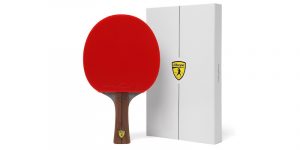
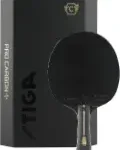
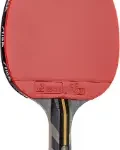





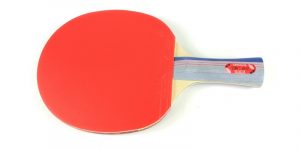
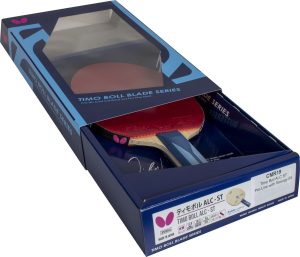
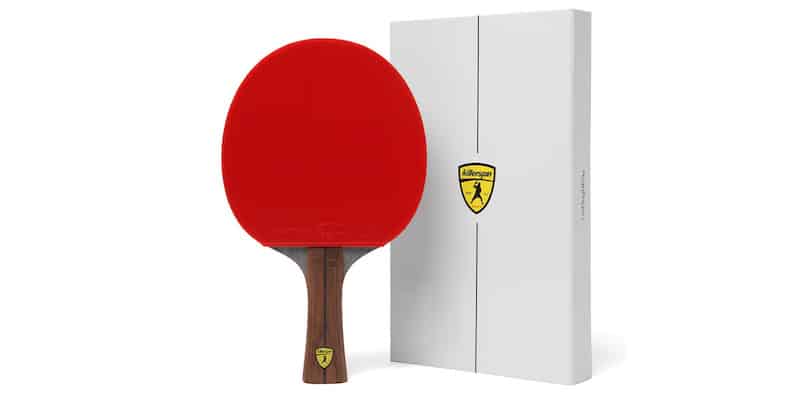
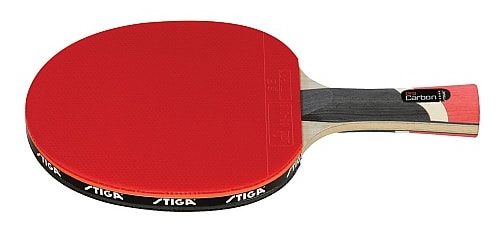
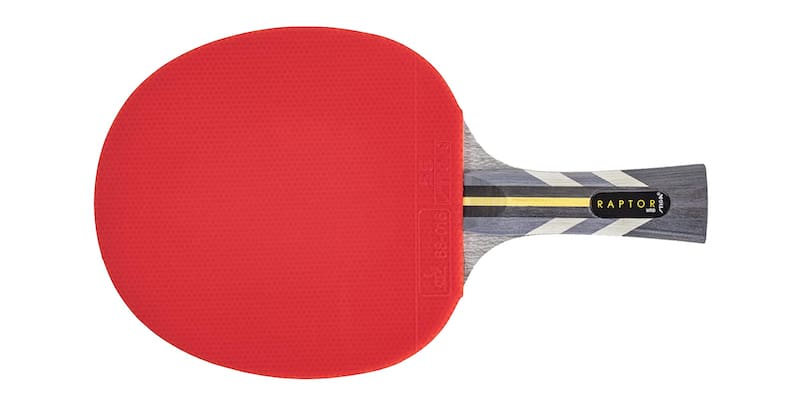
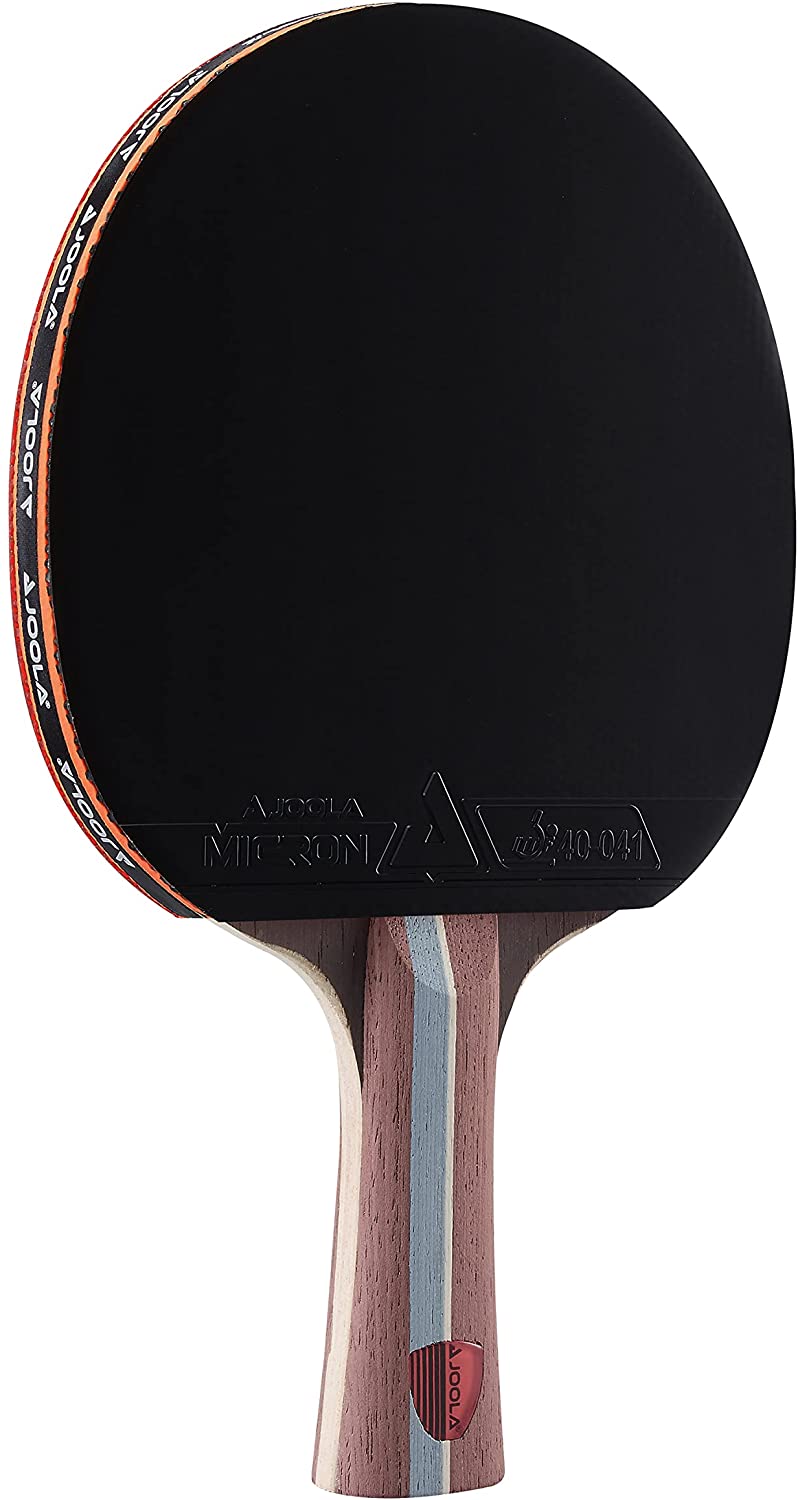
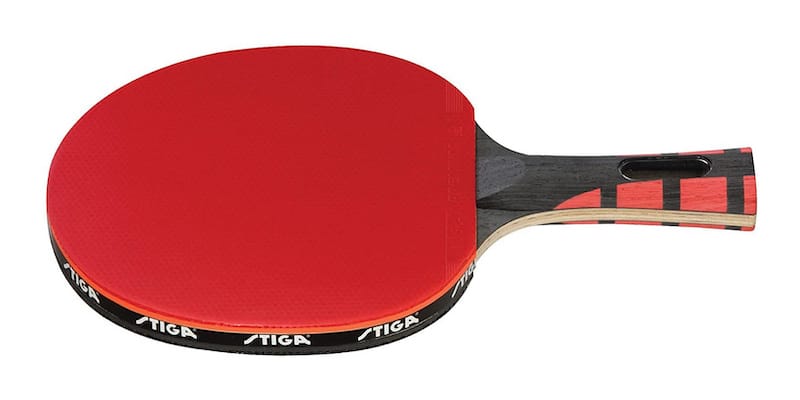
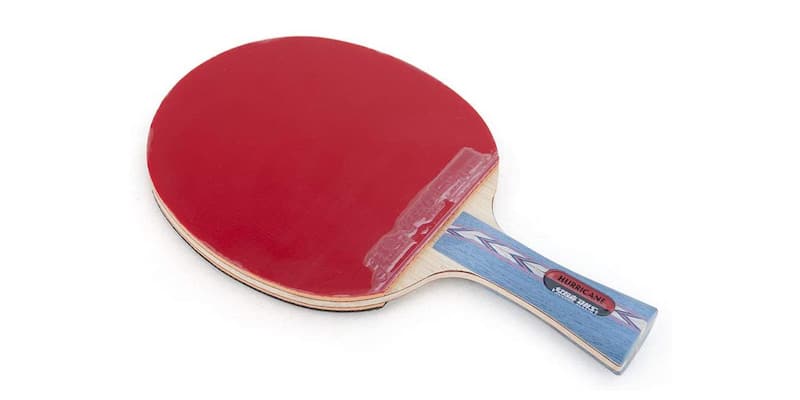
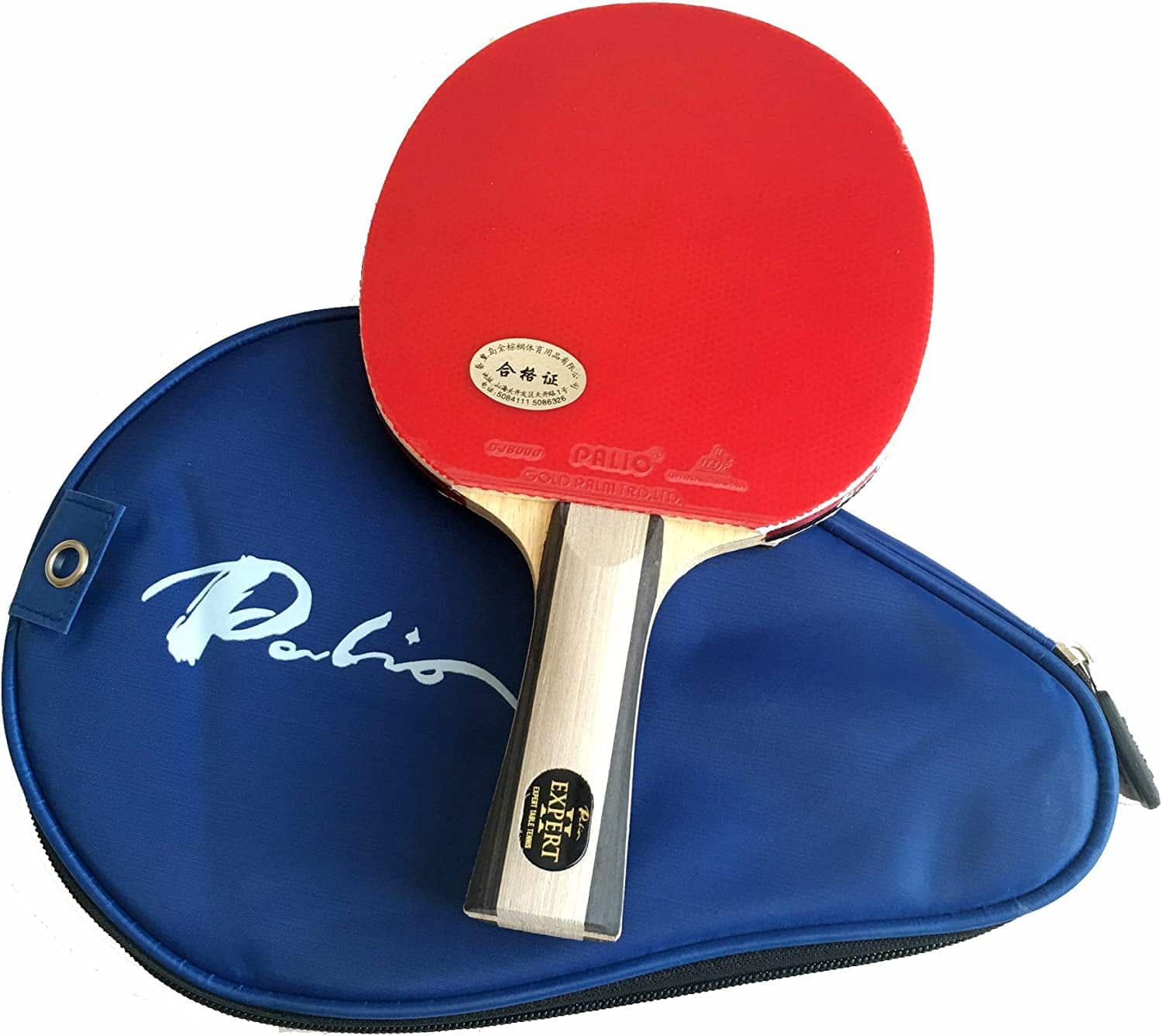
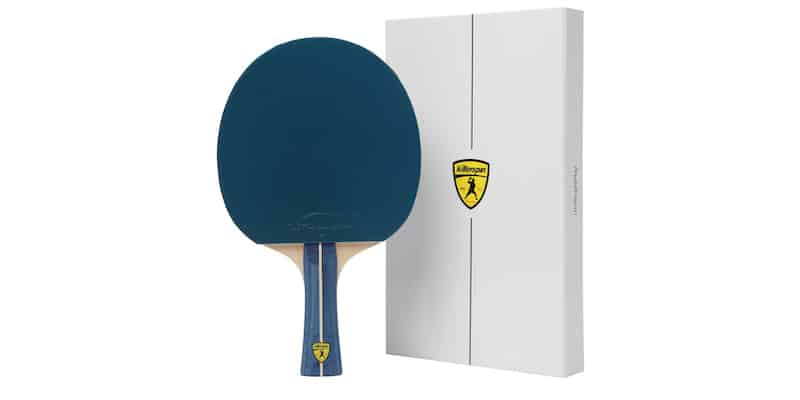
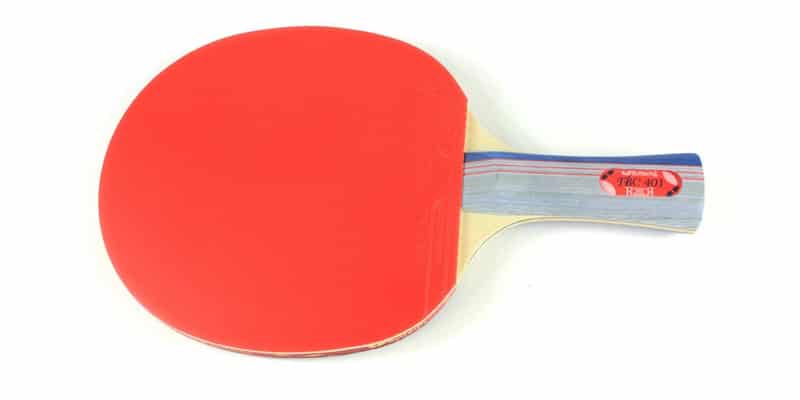
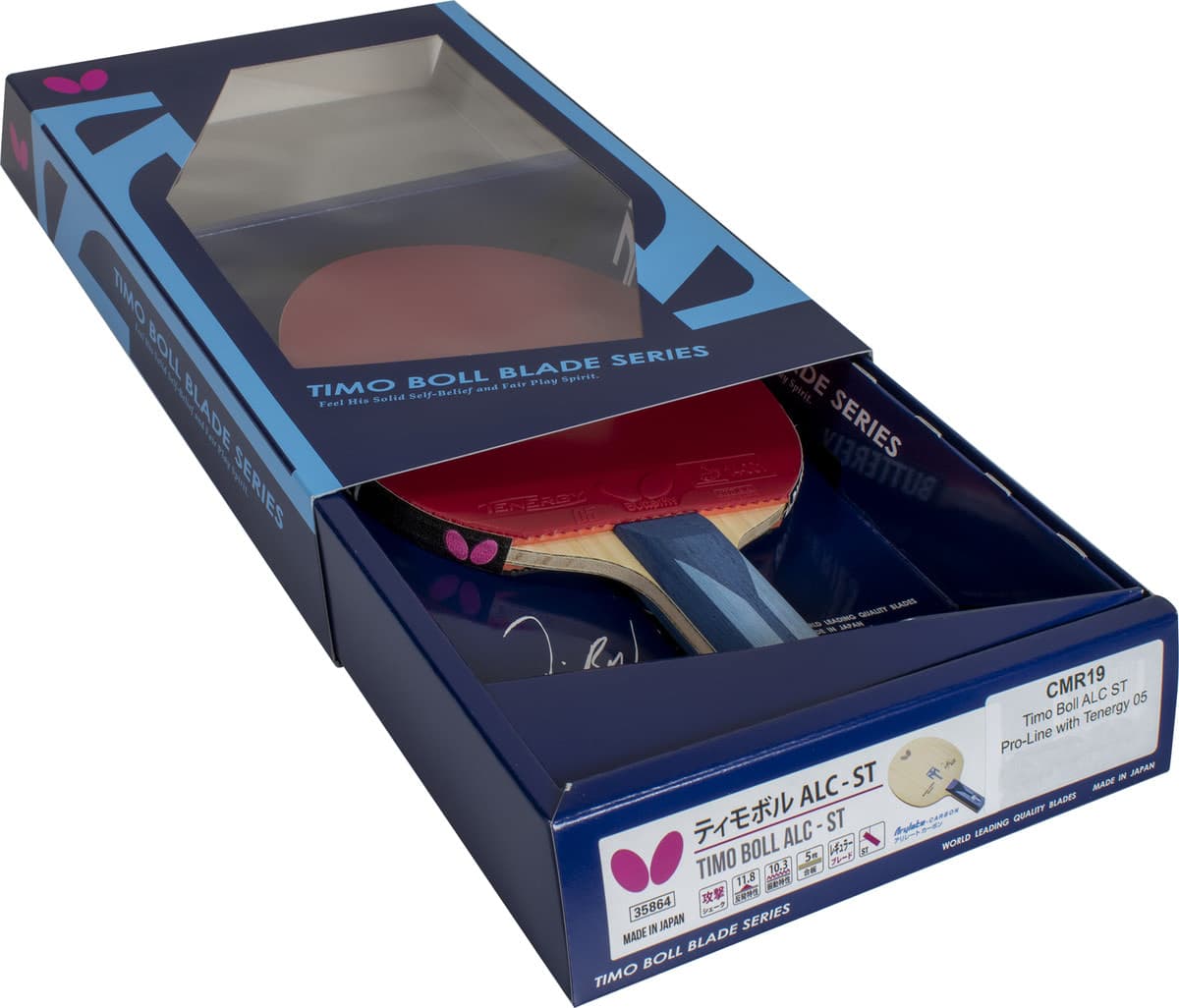
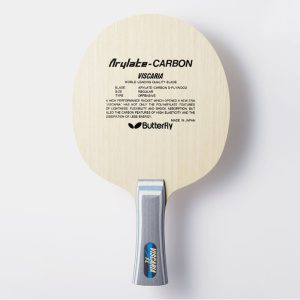
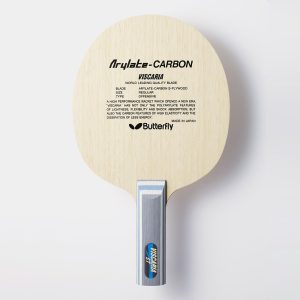

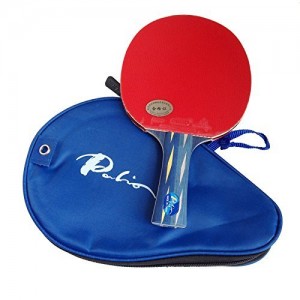
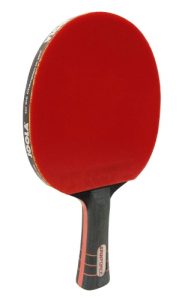
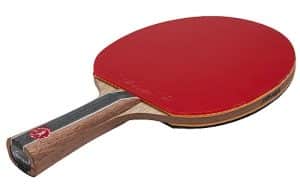

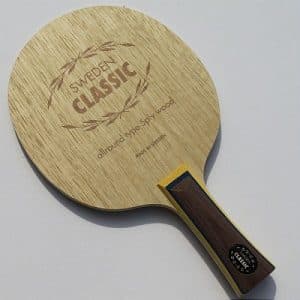
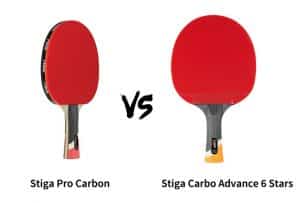
23 thoughts on “The 11 Best Ping Pong Paddles of 2024”
Actually I think the best table tennis blade is not made of koto wood such the TBS and tb alc. I truly believe that the Michael Maze offensive blade which identical but with the softer limba outer ply is perfect. Why? Because there is an increase in spin and touch but the power is the same.
It would seem that almost all the best table tennis players have quite heavy paddles. Most good players would say use as heavy as you can because the swing is more solid. What the best ping pong players use in the world might be different to what the best use at your club. It would seem at least at my club that half use tenergy and the other cheap stuff and much more controlled rubbers and blades.
Most of the top players use there own blade thats named after them at least the euros Maze Mizutani Korbel boll schlager etc.. There is not one paticular blade at my club but there is alot of tbs and keyshot the most popular rubber is tenergy 05 and donic bigslam
The best blade with speed that I have tried is the timo boll tricarbon but it is too heavy. power isn’t everything though. control the ball like the above blades is more important.
After having tried so many expensive bats – I have settled on a pretty cheap one that is not used by anyone I know. It suits me as well as possible.
It’s light and thin balancing out the heavy rubbers I like and it is not hard so it is more spinny. Apart from that I think I have come to a bit of an end on testing until I smash it.
May I know the price of adidas table tennis racket blade
The price of Adidas Hypertouch is around $100.
Hello thé Vega euro is made on koto on the top ply. It’s thé Vega pro whicish made with limba on the to ply.
My experience as a coach says that the Bty Zhang Jike Super ZLC is the fastest ever blade. Timo Boll alc is also great
Visitor Rating: 5 Stars
I just started out playing Table Tennis, I can say I’m still on a beginner stage since I only know the basic but we have this tournament for fun in our workplace. And so, I decided to purchase a Killerspin Kido 7P. I just want to know your opinion if this is an Ok racket for a beginner?
I wouldn’t make the weight the first thing to consider but you do want a bat that feels comfortable for you when playing. Generally speaking, weight is not a big issue when choosing a bat.
Visitor Rating: 5 Stars
Visitor Rating: 5 Stars
Visitor Rating: 5 Stars
Visitor Rating: 5 Stars
Visitor Rating: 5 Stars
Visitor Rating: 2 Stars
Visitor Rating: 5 Stars
Visitor Rating: 5 Stars
Visitor Rating: 5 Stars
Visitor Rating: 5 Stars
How about Zhang Jike Super ZLC? Is it good, or Viscari better? thank you
Zhang Jike Super ZLC is good to play close to the table. If you play mid to far distance, then Viscaria is a better choice.
Comments are closed.